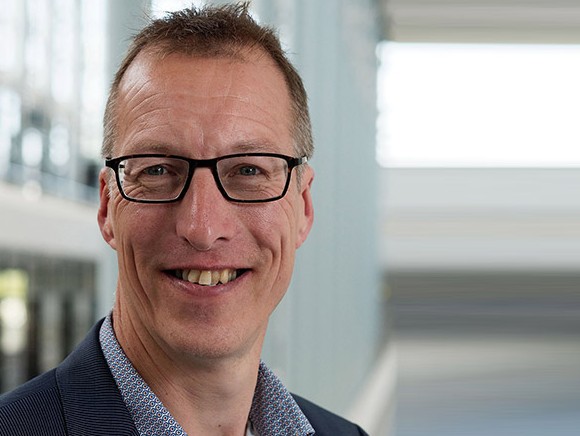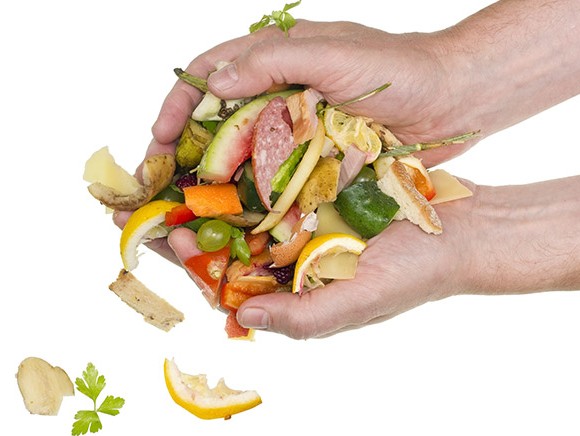
We have to end the linear model in the meat supply chain, where everything is centred on efficiency and intensity. That is the opinion of WUR researcher Toine Timmermans. In his opinion, we should import less soya and utilise more waste streams.
"The meat supply chain can and must become a circular system”
“We have to rewind a bit to the way it used to be,” says Timmermans He’s referring to the principle of livestock farming playing an important role in the economic value of waste streams. As a programme manager for sustainable food supply chains at WUR, Timmermans conducts research into preventing and reducing food waste and is involved in various domestic and international initiatives dedicated to higher-quality processing of waste streams. He is a big proponent of the widespread application of the circular system, in which resources are used as much as possible and waste does not exist. The technology is there and the desire to do it is growing; there are just a few more obstacles to overcome.
“The existing, linear model is focused on intensity and efficiency: ‘getting more by using less.’ It’s true that this has been highly successful for over 40 years. Matters such as animal welfare and environmental effects were less relevant for many years and the negative social impact of these has yet to be calculated into their cost. However, the situation is untenable: the large livestock sector is bearing down on the health of humans and animals and the earnings model is buckling under the weight. Public support is declining as well. The awareness that it has to be done differently is growing. All types of initiatives are appearing from the ground up. And for example, at the top tier, that awareness is now visible in the Sustainable Development Goals and the Paris Climate Accord. We are also seeing big investors being influenced more often by how businesses contribute to the sustainability and food security of the future.
“It represents a circular and inclusive system in which all resources are used efficiently and effectively and inevitable secondary waste streams are used for other processes. The entire supply chain, from the soil to the consumer, is involved in this. A healthy, sustainable diet serves as the basis for it, as do rich soil and biodiversity. If we rearrange the livestock farming industry according to the circular principle, those inevitable waste streams that currently become compost, fermenting agents and incinerated waste will largely be converted into animal feed. In the Netherlands, annual food waste in the entire supply chain is between 1.7 and 2.5 million tons. This can largely be avoided or even used in a more valuable way. For centuries, we have known that low-quality waste streams can be converted by animals into high-quality products such as milk, eggs, meat and insects. This is already under way: each year in the Netherlands, over 6 million tons of by-products from the food sector, such as brewers’ grains and potato peels, are being converted into animal feed. However, in the current situation, we import a great deal of soya scraps as the most efficient source for animal feed, because it is cheap and easy to process. This has a substantial environmental impact on soya-producing countries such as Brazil.”
“The smaller initiatives are very important”
“My WUR colleague Hannah van Zanten conducts research into the perspectives and advantages of the most circular model for the livestock farming sector. A highly interesting conclusion from the research is that we can produce enough animal proteins in this way for the entire Netherlands to eat based on the food pyramid and with a better ratio of plant-based to animal-based proteins. By using heated, processed food waste as feed, the land use required for pig production in the EU can be reduced by 20%. However, this is not yet permitted, because this type of food products may contain animal remnants. Something that is permitted is the use of “former foodstuffs” as resource for animal feed: defective cookies, chocolate bars, sweets, etc. This is being done more and more often, and Dutch businesses are leading the pack.”
“I don’t believe that it will work to focus all efforts on the reduction of protein intake via production-limiting measures or higher taxes on meats. There are currently a great deal of contradictions in the political climate and the interests within the industry. Of course, we have to return to a lower consumption of animal-based proteins in order to decrease environmental impact. However, I am arguing that we primarily concentrate on a circular approach, because this offers opportunities for all parties in the supply chain. The impact of uneaten food on climate change in the Netherlands amounts to 16 to 22% of the total effects caused by food. In total, food contributes to roughly 30% of the total emissions of gases that affect climate caused by human activities. That is a significant amount. Furthermore, it is much easier to halve the waste than it is to cut back on meat consumption. The technology is there and so is the ambition, and there are already many people working with the circular system. Now, the major players just have to move to action.”
“In the circular model, manure is transformed from a problem into a solution”
“The Netherlands is a frontrunner when it comes to waste processing. Each year, over six million tons of waste directly from the industry are converted into animal feed. These streams can be saved for human consumption. Whey waste streams from the dairy industry were long sent to parties such as calf farmers, but are now used as ingredients for protein shakes and green plastics. Within the Dutch poultry sector, there are also great examples of complementary initiatives to rearrange the supply chain in a circular way: Kipster, Oerei by Protix and Smits – energy resource. For example, chickens are fed live insects, which grow using low-value plant-based waste streams. The roosters are raised for human consumption instead of being disposed of after hatching or the chicken excrement is dried for use as fertiliser by consumers. In the circular model, manure is transformed from a problem into a solution. These are the initiatives of the future. Other examples from the food sector are De Verspillingsfabriek (The Waste Factory) and Kromkommer (Crooked Cucumber), which produce soup from food sources that otherwise would not reach the consumer. Broccoli stalks, produce rejected for cosmetic reasons or the tops and bottoms of tomatoes that are sent to McDonald’s. 18 of these social entrepreneurs have joined forces in the platform Verspilling is Verrukkelijk (Waste is Delicious) in order to collectively get more consumers acquainted with their products.”
“Current European legislation is a barrier. Due to the outbreak of animal illnesses about 15 years ago, it has become much stricter. In other parts of the world, more waste processing options are permitted. In countries like Japan, waste streams that contain animal remnants can be safely converted into pig feed by heating and fermenting them. Another recurring issue is the question of how to create a market for these ‘circular’ products, which are typically somewhat more expensive. Advantageous prospects are a condition for many businesses. The smaller initiatives are very important for this. They are being tested in living labs, which yields valuable information. This makes the benefits of the new model more convincing. However, they have to be better promoted and rewarded with support from the government. The economic value of more waste streams can and must be increased for many industries.”

“The economic value of more waste streams can and must be increased for many industries”
Timmermans is cautiously optimistic about political policy: “Minister Schouten of Agriculture, Nature and Food Quality is firmly motivated about making the food system more sustainable. She will present her food vision by this summer. The initial indications have been positive: reduction of food waste is definitely a priority of hers.”
Source: Beeld handen: ©VILAX/SHUTTERSTOCK.COM